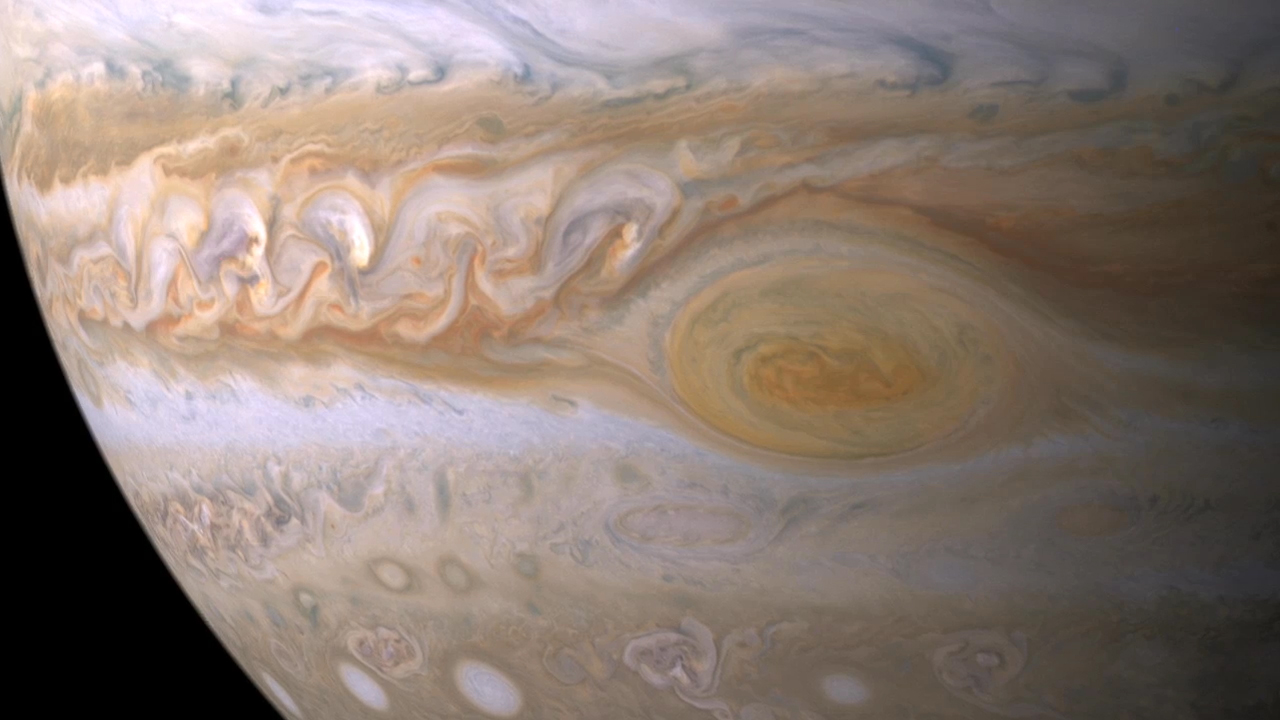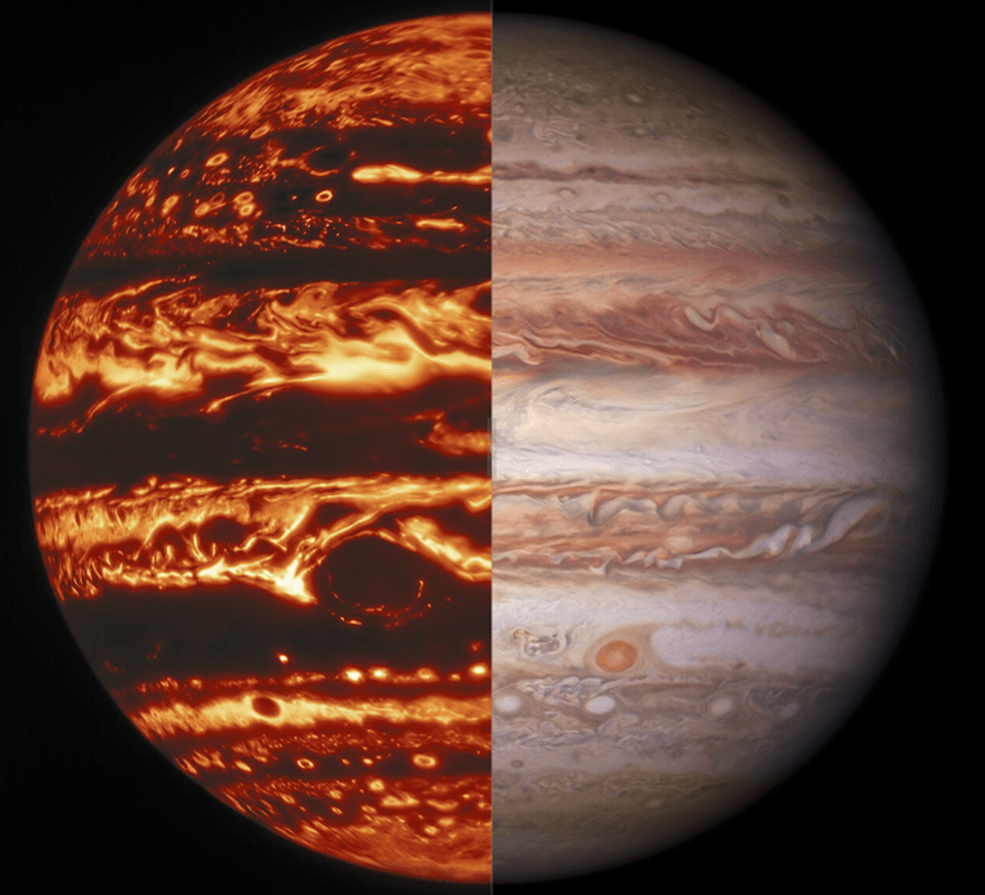The Great Red Spot seems immortal - it is a huge atmospheric vortex, red in color, which does not

What is the Great Red Spot?
The Great Red Spot (GRS) is located on Jupiteris an atmospheric vortex that is considered the largest in the entire solar system. The BKP decreases and also changes color and moves parallel to the equator.
Scientifically, it's a huge hurricanewhich is up to 40 thousand km in length, and approximately 12-14 thousand km in width. The wind inside the BKP accelerates to 500 km / h, and the temperature is about -160 ° C. But it is unstable, for example, the area in the center of the BCP is slightly warmer than at the edges.
Now astronomers note that the BKP is getting smaller: about 100 years ago, the spot was 50% larger and much brighter.
How did the Great Red Spot appear?
There are two theories about how the spot formed,explains Philip Marcus, a professor from the Department of Mechanical Engineering at the University of California, “the first is from an active gas flow that reached the stratosphere and began to wrap up. This is how, according to Marcus, the whirlwind could begin.
The second option is due to the jet stream inatmosphere, which became unstable and formed wave oscillations. At that moment, when the oscillations of the wave reached the extreme point, it disintegrated and small vortices formed, forming a large vortex.
Why is the stain red?
It is still unknown how the stain became like thisbright red. Astronomers are testing the theory of how cosmic rays, as well as ultraviolet radiation, affect Jupiter's atmosphere and the chemical composition of its clouds.
One of the main assumptions is radiation from the Sun, which reacts with ammonium hydrosulfite from the planet's clouds. As a result, it acquired a blood red hue.

What's inside the Great Red Spot?
Researchers recently learned thatoccurs inside the spot. Its diameter is about 16 thousand km, but there was no data on the depth. Scientists used microwave and gravity measurements to estimate the depth and structure of the BCP.
The Juno or Juno mission studied Jupiter using data from the MWR microwave radiometer. Using it, you can look inside the clouds of the planet at a distance of about 550 km.
Based on the results of the probe's work, the researchers found that the spot is of impressive size and is located even below the cloud level, in other words, the level of condensation of water and ammonia.
This means that the depth of the slick can be about 350–500 km, while the surrounding jets extend to a depth of 3,000 km.
Astronomers also noticed one feature inthe atmosphere of Jupiter - the direction of the vortices and their temperature have a connection. For example, vortices that move in the same direction as the planet orbit are warmer at the top and colder at the bottom. Conversely, those that move in the opposite direction are warmer below and colder above.

What other questions are left to the atmosphere of Jupiter and to the spot?
So far, astronomers do not know how the belts of the atmosphere on Jupiter are formed - they look like white and red stripes of clouds: they are separated by a stream of wind that blows in opposite directions.
According to the Juno mission, they are formed due to ammonia gas - it is this that moves up and down in the same rhythm as the air flow.
Also in the chapter where we talked about the color of the spot,it is indicated that scientists still cannot determine exactly why it took on such a bright red hue. In addition, it is not known for certain how the BKP was formed.
How will the Great Red Spot and Jupiter be studied further?
The Juno station is currently located in Jupiter's orbit; it has been there since 2016.
Its goal is to study the gravitational and magnetic fields of the planet, as well as explore the atmosphere and refine the hypothesis that Jupiter has a solid core.
Astronomers continue to study the Big Redspot, since this phenomenon and its causes are still not fully understood by modern science - this is an example of space weather that cannot be repeated in Earth conditions, so you need to wait for new information from Juno.
Read more:
A huge "black hole" was found in the middle of the Pacific Ocean. The network is wondering what it is
Divers have found the treasures of the legendary "Island of Gold". Artifacts cost millions of dollars
AI solved a biological problem that scientists have been battling for 50 years